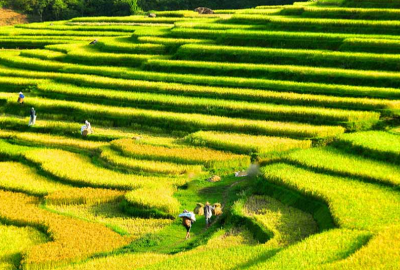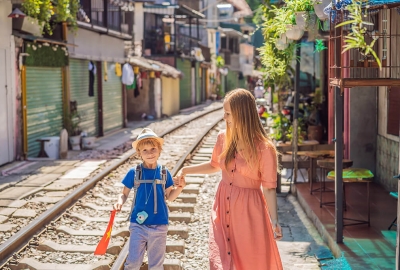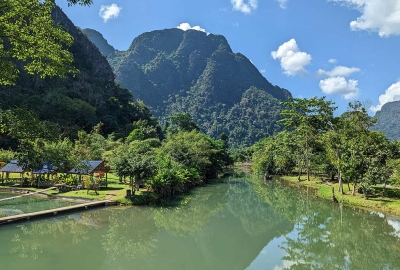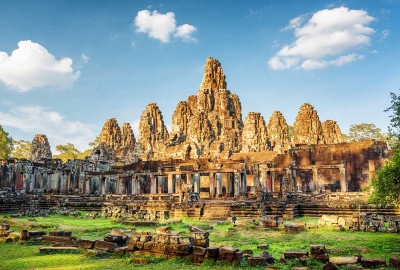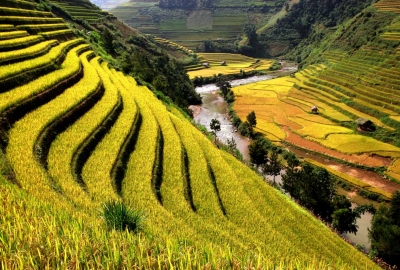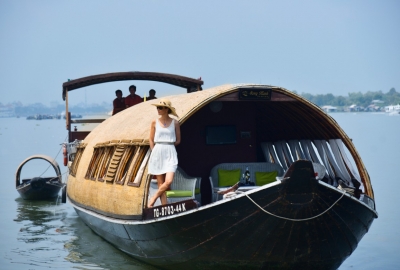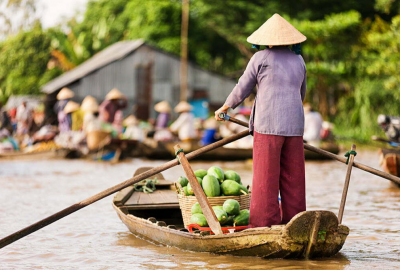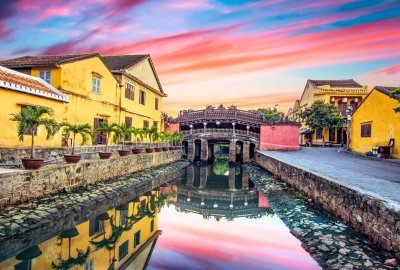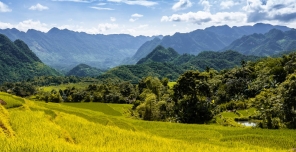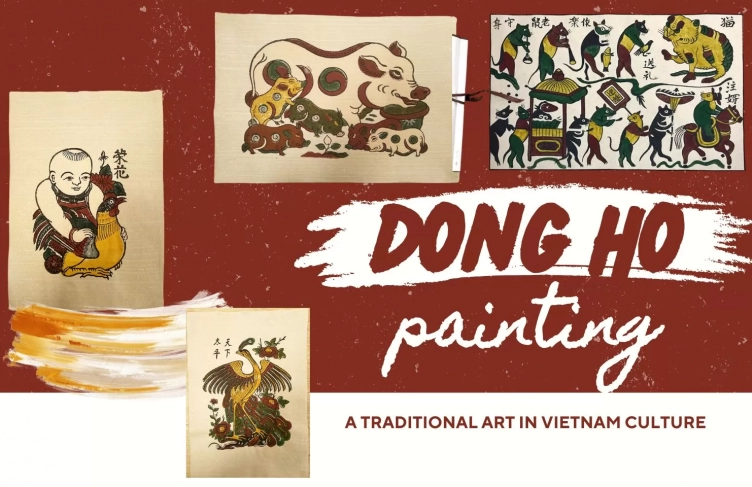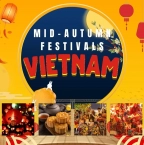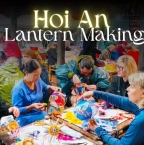Top 10 Vietnam's iconic symbols and their deep meanings
Vietnam's iconic symbols tell the story of a nation shaped by tradition and history. From the national flag to water buffalo, each symbol holds deep cultural significance. Let’s explore their meanings and the heritage they represent.

Vietnam is a land of rich traditions, deep history, and vibrant culture. When people think of Vietnam, they often picture its iconic symbols - each carrying a story of heritage and national pride. The elegance of the Ao dai, the strength of the dragon, and the purity of the lotus are just a few examples of symbols that reflect Vietnam’s identity and resilience. More than just cultural emblems, they tell stories of artistry, perseverance, and deep-rooted traditions.
Join us as we explore the top 10 Vietnam's iconic symbols and the deep meanings behind them.
Table of Contents
Discover top 10 Vietnam's iconic symbols and their meanings
Vietnam’s iconic symbols are a unique and meaningful part of the country’s culture, ranging from the national flag to the lotus flower. They reflect Vietnam’s rich history and traditions, while holding a special place in the hearts of the Vietnamese people. Let’s discover them together on your next Vietnam holiday!
Vietnamese National Flag
![]()
The red flag with a yellow star has become a profound symbol of national pride of Vietnam. From the moment they are born, every Vietnamese person grows up seeing the flag waving proudly in schools, streets, and historic sites. It represents not only the country’s independence but also the resilience, unity, and unyielding spirit of the Vietnamese people. Through decades of struggle and triumph, this flag has stood as a testament to Vietnam’s strength and unwavering patriotism.
The Vietnamese national flag or red flag with a yellow star (Cờ đỏ sao vàng) was introduced in 1940. It became North Vietnam’s official flag in 1945 after independence and was later adopted as the national flag of reunified Vietnam in 1976.
📌 Colors and meaning:
Red background: Represents the blood and sacrifice of those who fought for Vietnam’s independence and freedom.
Yellow five-pointed star: Symbolizes the unity of the Vietnamese people, with each point representing the five main social classes - intellectuals, farmers, workers, businessmen, and soldiers. The yellow color also represents the golden skin tone of the Vietnamese people, reflecting the nation's identity.
The Vietnamese national flag is prominently displayed during major events, including National Day (September 2nd), Reunification Day (April 30th),... symbolizing independence and unity. It is also seen during Tet celebrations, international sports events, and memorial ceremonies, reflecting national pride and respect for history.
Lotus flower - symbol flower of Vietnam
![]()
The lotus flower is considered a symbol flower of Vietnam for purity, resilience, and enlightenment. The lotus may be found all around Vietnam in the murky water of lakes and ponds. Despite growing in muddy waters, the lotus blooms beautifully without being tainted, representing the virtue of rising above hardships and leading a noble life. This unique characteristic makes it a powerful emblem of strength and perseverance in Vietnamese philosophy.
Deeply rooted in Vietnamese culture, the lotus appears in poetry, folk songs, and traditional art with a lot of colors such as pink, white, purple, red, blue,... It is commonly seen in pagodas, temples, and sculptures, also known as “Lien Hoa Toa”- the sacred seat of Buddha, symbolizing wisdom, peace and enlightenment in Buddhist belief. With its deep symbolism and presence in Vietnamese culture, the lotus flower stands as a timeless emblem in the soul of Vietnamese people.
Ao dai - Vietnamese traditional long dress
![]()
The Vietnamese traditional costume, Ao dai, is a symbol of elegance, grace, and national pride. The image of Vietnamese women in flowing “áo dài” has captivated visitors, leaving a lasting impression of Vietnam’s beauty and charm.
Designed with a long, form-fitting tunic worn over loose trousers, the Ao dai accentuates the wearer’s figure while maintaining modesty and sophistication. It comes in a variety of colors, each carrying its own meaning- white symbolizes purity, red represents luck and happiness, while blue and violet reflect gentleness and nostalgia.
The Ao dai is worn on special occasions such as weddings, Tet (Lunar New Year), national celebrations, and school ceremonies. It is commonly worn by students, women, and even men in formal events, showcasing the timeless beauty of Vietnamese traditional costume.
📌Where to see and experience wearing “ao dai” in Vietnam
The Vietnamese traditional costume, ao dai, is most commonly seen in cities rich in culture and history, such as Hanoi, Hue, and Ho Chi Minh city.
To fully experience the elegance of this traditional costume in your Vietnam trip, tourists can rent or wear ao dai while exploring historic landmarks, taking part in cultural festivals, or even joining photoshoots at famous spots like the Imperial City of Hue, Hoi An Ancient Town, and Hoan Kiem lake
Non la - the conical hat
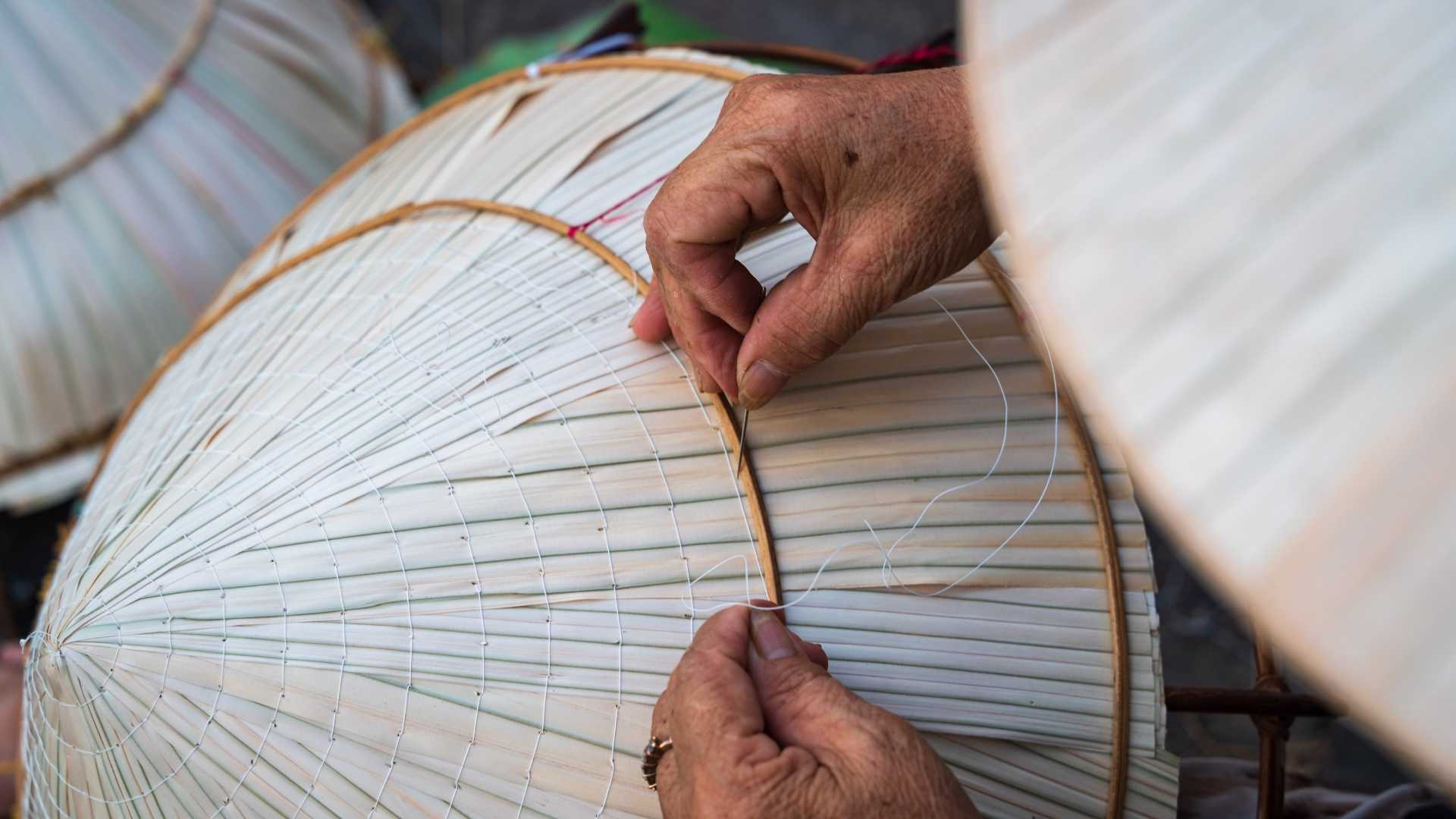
The Non la Vietnam (Vietnamese conical hat) is a timeless symbol of the country’s culture and identity. Often paired with the Vietnamese traditional costume, áo dài, it completes the elegant and graceful look of Vietnamese women. Made from palm leaves, bamboo, and moc tree bark, the conical hat is lightweight, durable, and intricately handcrafted. Its conical shape represents simplicity, resilience, and protection, much like the Vietnamese people. Beyond being a practical sun and rain shield, it embodies Vietnamese rural life, grace, and tradition.
Non la is commonly worn by farmers working in the fields, street vendors, and even students in traditional ceremonies. It is also used in performances and cultural events, showcasing Vietnam’s artistic heritage.
Visitors can find conical hats at local markets, souvenir shops or some traditional craft villages across Vietnam, with prices ranging from 30,000 VND ($1.2) to 300,000 VND ($12). Some of the best places to buy include Dong Ba market (Hue), Ben Thanh market (Ho Chi Minh city), and the Old Quarter (Hanoi). Handcrafted versions with poetry or embroidery inside make unique and meaningful gifts for travelers.
Dong Son drum
![]()
The Dong Son drums are ancient bronze drums dating back over 2,000 years, representing the brilliant craftsmanship and rich Vietnamese cultural heritage. Made primarily of bronze, Dong Son drums have a golden-brown patina, which develops naturally over time, giving them an aged yet majestic look.
These drums symbolize power, prosperity, and spiritual beliefs. They were once used in rituals, ceremonies, and warfare, reflecting the advanced society and strong identity of ancient Vietnamese people. The drums' surface features elaborate engravings of sun motifs, warriors, birds, and daily life, illustrating the harmony between nature, humans, and the universe.
Today, Dong Son drums remain a proud national symbol and can be seen in museums, historical sites, and traditional festivals. They serve as a reminder of Vietnam’s rich history and the enduring spirit of its people.
Lac bird
![]()
The Lac Bird is one of the most iconic traditional symbols of Vietnam, deeply rooted in the country’s ancient history and mythology. Found on Dong Son drums, this mystical bird is believed to represent the spiritual connection between heaven and earth, symbolizing freedom, strength, and the resilience of the Vietnamese people.
The Lac Bird’s graceful form has inspired Vietnamese art, architecture, and folklore. Its image is commonly found in traditional carvings, temple decorations, and embroidered textiles, representing the enduring cultural identity of Vietnam. As a symbol of national pride, it continues to be celebrated as a vital part of Vietnamese cultural heritage.
One pillar pagoda
![]()
📍 Location: Ong Ich Khiem Street, Ngoc Ha, Ba Dinh District, Hanoi
⏳ Opening hours: daily 8 AM - 5 PM
💸 Entrance fee: Free
When mentioning historic architectural landmarks as one of Vietnam’s iconic symbols, One Pillar Pagoda immediately comes to mind. As one of the most beautiful Hanoi’ pagodas, the One Pillar Pagoda is a unique architectural masterpiece and a symbol of Vietnam’s spiritual heritage.
Built in 1049 during the Ly Dynasty, the One Pillar Pagoda is designed to resemble a lotus flower rising from the water, symbolizing purity and enlightenment. The structure is supported by a single stone pillar, creating the illusion of a floating lotus, therefore it is also known as “Lien Hoa Dai”.
The pagoda is considered a spiritual and cultural treasure of Vietnam. Legend says it was built as a gesture of gratitude by Emperor Ly Thai Tong after having a dream of a Bodhisattva handing him a lotus, symbolizing good fortune. Many visitors come to admire its unique architecture, make offerings, and seek blessings. It is not only a religious site but also a symbol of Vietnam’s deep-rooted Buddhist heritage.
Pho - An iconic dish in Vietnam
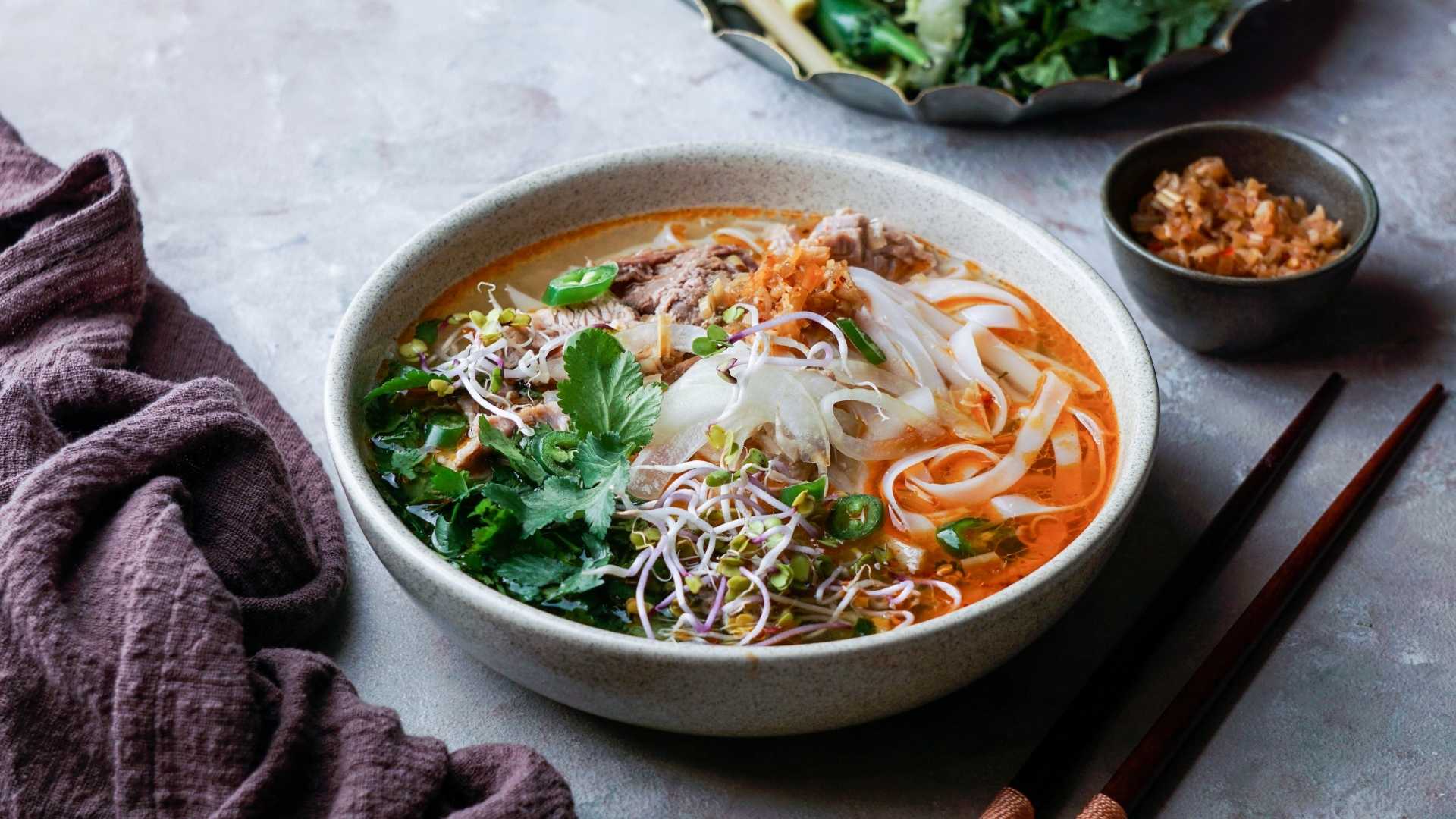
When it comes to Vietnamese cuisine, Pho is undoubtedly one of Vietnam's iconic symbols and beloved dishes. Whether you’re enjoying it on a chilly morning in Hanoi or a bustling street in Ho Chi Minh city, it offers a taste of Vietnam’s soul.
Pho consists of a fragrant broth, flat rice noodles, tender beef or chicken, and fresh herbs. The broth is simmered for hours with beef bones, star anise, cinnamon, and other aromatic spices, creating a rich and deeply satisfying flavor. It is typically served with lime, chili, bean sprouts, and basil, allowing each person to customize their bowl.
For those seeking the true flavor of Vietnamese pho, we highly recommend some restaurants you should visit such as Pho Gia Truyen Bat Dan (Hanoi), Pho Thin (Hanoi), Pho Le (Ho Chi Minh), Pho Hoa Pasteur (Ho Chi Minh),... or for a truly local experience, don’t hesitate to try “pho” at small street-side stalls. These humble eateries often serve some of the most authentic and flavorful bowls, letting you enjoy the dish just like the locals do.
Bamboo
![]()
One of Vietnam’s iconic symbols, bamboo is seen as a symbol of endurance and flexibility - qualities deeply associated with the spirit of the nation. Bamboo has been an essential part of Vietnamese life for centuries. It is used to build houses, furniture, baskets, and even traditional musical instruments. Farmers rely on bamboo for tools, while soldiers in the past crafted bamboo spears for defense. This plant is also a familiar sight in Vietnamese villages, often growing alongside small ponds or surrounding homes, creating a peaceful and picturesque landscape.
Today, bamboo continues to be a proud symbol of Vietnamese cultural heritage and identity. Whether in rural villages or modern cities, its presence reminds people of the country’s deep-rooted traditions and the unwavering strength of its people.
Water buffalo
![]()
The water buffalo is one of Vietnam’s iconic symbols, which has been deeply connected to Vietnamese agriculture, traditions, and daily life. As an essential part of wet rice cultivation, it has helped generations of farmers plow fields, transport goods, and support livelihoods.
Beyond agriculture, the water buffalo holds a special place in Vietnamese culture, folklore, and festivals. It frequently appears in traditional paintings, legends, and proverbs, symbolizing peace and harmony. During festivals such as the Buffalo Fighting festival in Do Son, locals celebrate the buffalo’s strength and spirit through competitions. Or you can see a famous image in Vietnamese culture is that of a young boy playing the flute while riding a buffalo, symbolizing the simple and peaceful life of farmers. Representing the hardworking spirit, perseverance, and peaceful rural life of the Vietnamese people, the water buffalo is a symbol of national pride across generations.
Vietnam’s iconic symbols beautifully capture the nation’s history, culture, and spirit. Experiencing these symbols firsthand offers a deeper connection to Vietnam’s rich heritage. Ready to explore them for yourself? Embark on an unforgettable journey with Hanoi Voyages and enjoy an unforgettable adventure through the heart of Vietnam!
Dream about your trip to Asia, in private
We are here to make it happen with youFREE QUOTE, WITHOUT OBLIGATION

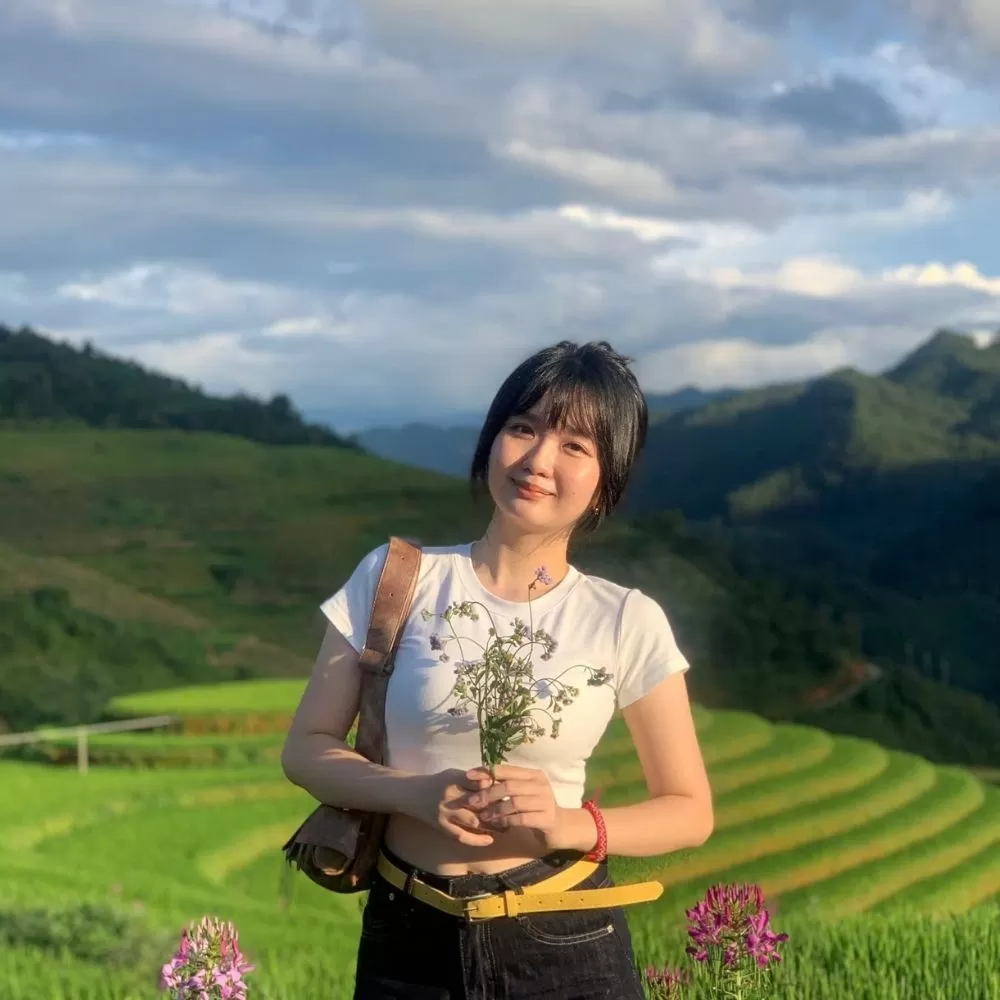





.webp)



